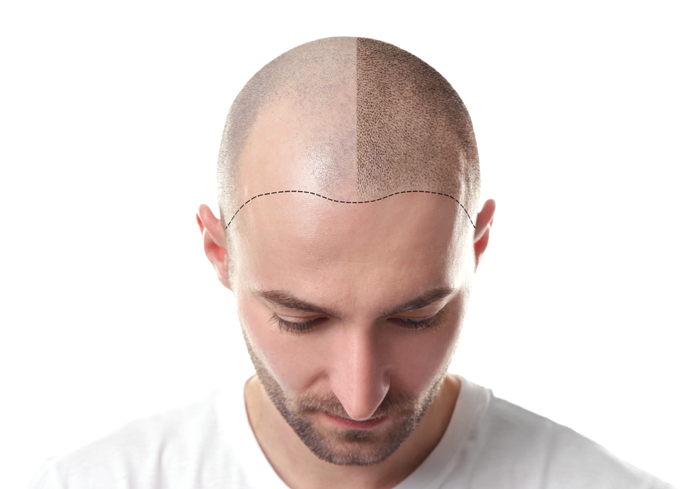Hair Transplant in C-scheme, Jaipur
Hair Transplantation is a type of surgery where the doctor moves hair that you already have on your body to fill the area of the head which is bald or has very thin hair. In most cases, hair is usually moved from the back or side of the head to the front or top of the head.
The hair follicles are removed from the part which is known as the ‘donor site’ and placed at the part which is called the recipient site.
Hair transplantation can help restore one’s eyelashes, eyebrows, beard hair, etc. as well as fill in places that have scars due to any accidental injury.
This surgical technique is majorly used to treat Male Pattern Baldness, in which hair loss typically occurs as either a receding front hairline, on the crown of the scalp, or a combination of both.
One may face hair loss due to a variety of other causes that includes genetically acquired baldness patterns, diet, stress, hormonal imbalance, or certain medications, etc.

The procedure of Transplanting Hair
One can discuss the method that they prefer for hair transplant with their doctor. As the first step for any of the chosen techniques, the doctor would thoroughly clean your scalp and inject local anesthesia to numb the back of your head. There are mainly three types of hair transplantation techniques prominent in India. These are:
- FUT(Follicular Unit Transplantation)
Also known as Strip Harvesting, this is the most common technique for removing hair follicles from the donor site.
The surgeon cuts out a 6-10 inch strip of scalp skin from the back of the head which usually has better hair growth.
The incision is then closed by stitching and usually recovers in around 2 weeks. Next, the removed portion of the scalp is divided into several small sections called grafts, each with an individual hair or a little more than that.
After implantation of these sections, you will be able to have natural-looking hair growth.
- FUE (Follicular Unit Extraction)
In FUE, the back of your head is shaved by the surgeon, and the hair follicles are cut out one-by-one through tiny punch incisions which usually recover in a few days.The individual follicles that are cut out usually contain 1 to 4 hairs which are then gently placed into tiny holes which are receiving the transplant.
A surgeon may transplant hundreds or thousands of hair follicles in one session.
- Advanced Hair Grafting
This procedure has been considered one of the most advanced hair transplantation techniques. In this procedure, the hair follicles are removed from the donor area one by one through a very fine extractor with a diameter of 1mm or less. The extracted hair is then placed directly on the treatment area using a single-use implanter. Although the procedure seems similar to other techniques, it takes less time and gives better results with less pain.
Benefits of Hair Transplantation
Getting a hair transplant cannot only help rebuild one’s confidence in their appearance but also provide other benefits like regrowth of natural hair, permanent remedy for baldness, and low maintenance since it is a one-time procedure.
People who experience pattern baldness, hair thinning, or loss of hair due to injuries can surely benefit from these helpful, advanced techniques.
Risk Factors
Like any other surgery, there are some risks involved in hair transplantation surgeries as well. These may include:
- Bleeding
- Infection
- Scarring
- Regrowth that appears unnatural
- Shock Loss or Folliculitis(not permanent)
In case you are facing any of these issues post-surgery for a prolonged period, please contact the surgeon at Apollo Spectra, Jaipur immediately.
Request an appointment at Apollo Spectra Hospitals, Jaipur
Call 1860 500 2244 to book an appointment.
Yes, since the transplanted hair is naturally grown like the other hair on your head, it might get thin over time as well.
The Advanced hair grafting method has a faster recovery period and can be performed with less bleeding. Also, it has a better possibility for achieving higher density compared to other methods.
Within two to three weeks of the surgery, one can expect complete restoration of hair.
Symptoms
Our Top Specialities
NOTICE BOARD
CONTACT US
CONTACT US
 Book Appointment
Book Appointment


.svg)
.svg)
.svg)
.svg)








